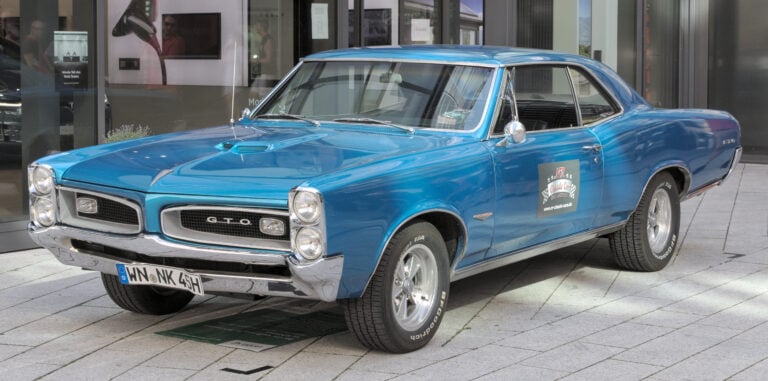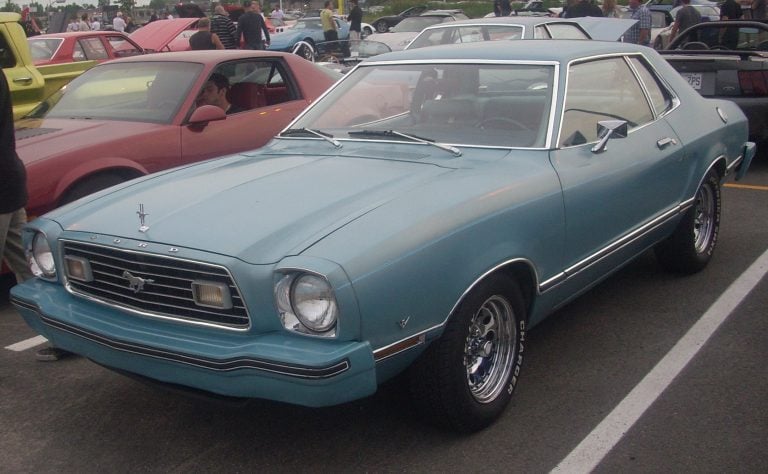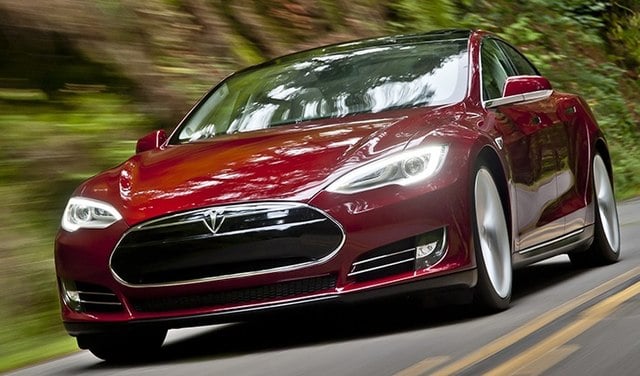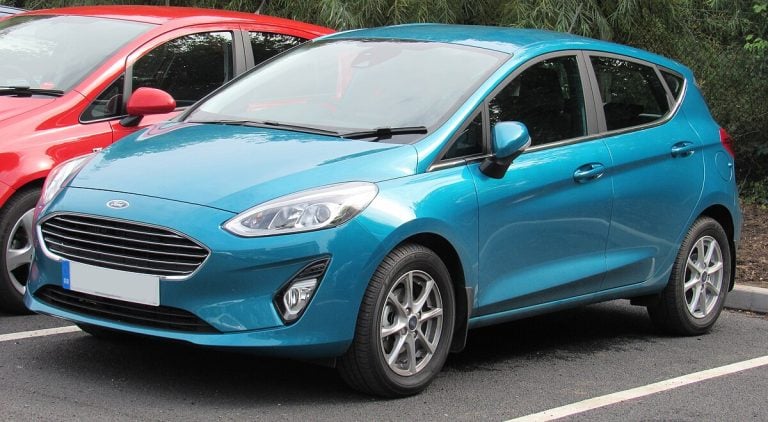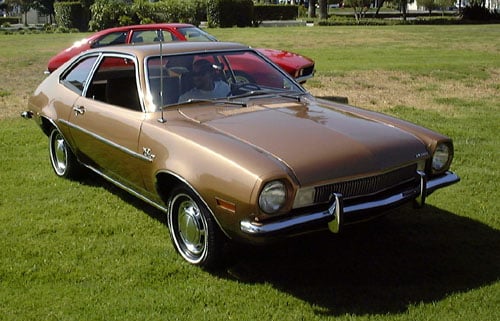The 30 Greatest American Sports Cars of All-Time: A Definitive Ranking of Legendary Performance Vehicles
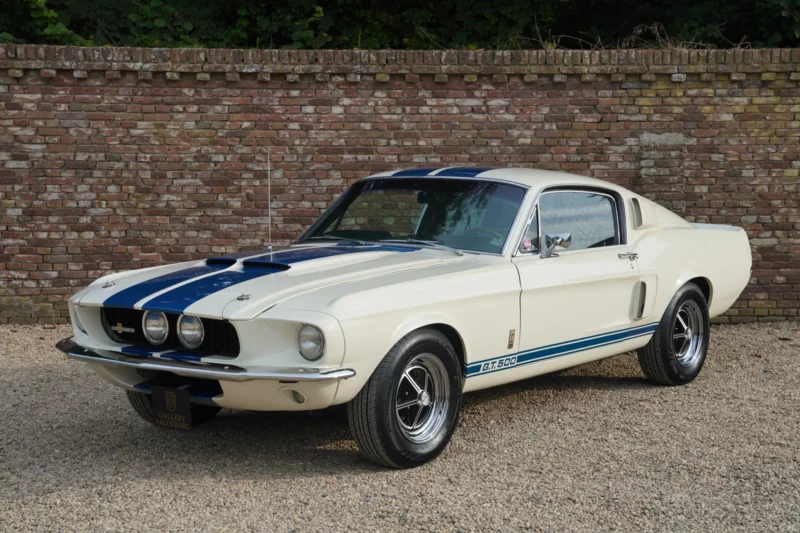
American sports cars represent the pinnacle of automotive engineering and design, capturing the essence of freedom, power, and innovation that defines American culture. From classic muscle cars to modern supercars, these vehicles have earned their place in automotive history through their exceptional performance, distinctive styling, and technological advancements.
The greatest American sports cars combine raw power with precision handling, creating driving experiences that rival the best European and Japanese competitors while maintaining a uniquely American character.
These iconic machines—from Corvettes and Mustangs to Vipers and Teslas—have not only dominated racetracks and drag strips but have also become cultural symbols that reflect America’s evolving relationship with speed, technology, and automotive design excellence.
Here are the 30 greatest American sports cars of all-time:
1. Ford Mustang Shelby GT500
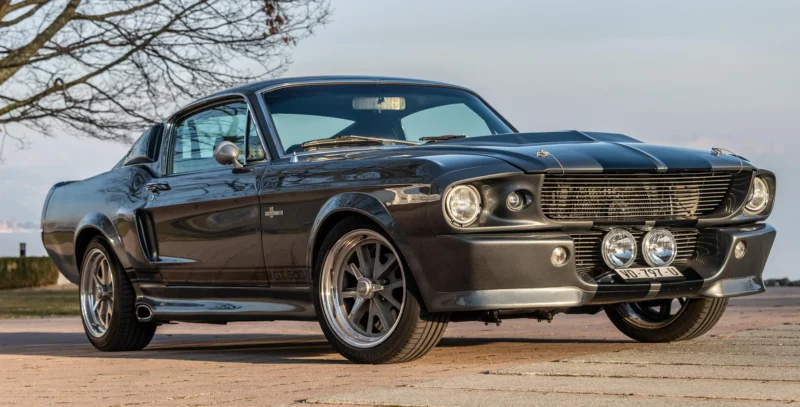
The Ford Mustang Shelby GT500 stands as an iconic American sports car that combines raw power with impressive engineering. First introduced in 1967 through the collaboration between Ford and racing legend Carroll Shelby, it quickly established itself as a performance benchmark.
The modern GT500 continues this legacy with supercharged V8 engines producing remarkable horsepower figures. The 2020 model pushed boundaries with its 760-horsepower supercharged 5.2-liter V8, making it the most powerful production Mustang ever created.
Beyond straight-line speed, recent GT500 models incorporate sophisticated suspension systems and aerodynamic enhancements. These engineering improvements allow the vehicle to handle corners with precision while maintaining its drag-strip dominance.
The Shelby GT500 represents American muscle car philosophy at its finest – bold styling combined with thrilling performance. Its distinctive visual cues, including racing stripes and aggressive body styling, make it instantly recognizable on the road.
2. Chevrolet Corvette Z06

The Chevrolet Corvette Z06 stands as one of America’s most impressive performance machines ever created. First introduced in 2001, this high-performance variant of the standard Corvette has consistently pushed the boundaries of American engineering.
The Z06 features a more aggressive aerodynamic package and increased power output compared to the base Corvette models. Its lightweight construction and track-focused suspension system make it a formidable competitor against exotic European sports cars.
Recent Z06 iterations have featured remarkable powerplants, including the 650-horsepower LT4 supercharged V8 in the C7 generation and the naturally aspirated flat-plane crank V8 in the C8 Z06 producing over 670 horsepower.
With impressive lap times at famous tracks worldwide, the Z06 has established itself as a genuine supercar at a fraction of the price of its competitors. The model represents American performance at its finest, combining raw power with sophisticated technology.
3. Dodge Viper GTS

The Dodge Viper GTS debuted in 1996 as the coupe version of the already formidable Viper RT/10 roadster. With its distinctive double-bubble roof design and iconic blue with white racing stripes color scheme, the GTS became instantly recognizable in American automotive culture.
Under the hood, the GTS housed an enormous 8.0-liter V10 engine producing 450 horsepower, which later increased to 490 hp in later models. This raw power enabled the Viper to accelerate from 0-60 mph in approximately 4 seconds, impressive performance metrics for its era.
What made the Viper GTS special was its unapologetic approach to performance. It lacked driver aids common in other sports cars, offering instead a pure, mechanical driving experience that demanded skill and respect from its driver.
The Viper GTS also established its racing pedigree with victories at prestigious events including the 24 Hours of Daytona and the 24 Hours of Le Mans.
4. Ford GT
![]()
The Ford GT stands as one of America’s most iconic supercars, first appearing as the GT40 in the 1960s when it famously defeated Ferrari at Le Mans. This legendary victory cemented its place in motorsport history and American automotive excellence.
Ford revived the GT in 2005 as a modern interpretation of the classic, featuring a mid-mounted supercharged V8 engine producing 550 horsepower. Its distinctive low-slung profile and racing heritage made it an instant collector’s item.
In 2017, Ford unveiled the second-generation GT, featuring advanced carbon fiber construction and a 647-horsepower twin-turbocharged V6 engine. This model continued the racing legacy by winning its class at Le Mans in 2016, exactly 50 years after the original’s first victory.
The GT represents American engineering prowess and the nation’s ability to compete with European exotic manufacturers. Its limited production numbers and exceptional performance capabilities ensure its status as one of America’s greatest sports cars.
5. Chevrolet Camaro ZL1

The Chevrolet Camaro ZL1 represents American muscle at its finest, combining raw power with track-ready performance. First introduced in 1969 as a limited-production model, the ZL1 nameplate was revived in 2012 and continues to be the pinnacle of Camaro performance.
Modern ZL1 models feature supercharged V8 engines producing over 650 horsepower, allowing them to compete with sports cars costing twice as much. The 2017 redesign brought significant aerodynamic improvements and a more sophisticated suspension system.
The ZL1’s track capabilities are particularly impressive, with the 1LE package enabling it to set blistering lap times at the Nürburgring. Despite its performance credentials, the ZL1 remains accessible as a daily driver with modern amenities.
Chevrolet’s engineers balanced brute force with handling precision, creating a versatile sports car that honors the Camaro’s heritage while pushing performance boundaries.
6. Shelby Cobra 427
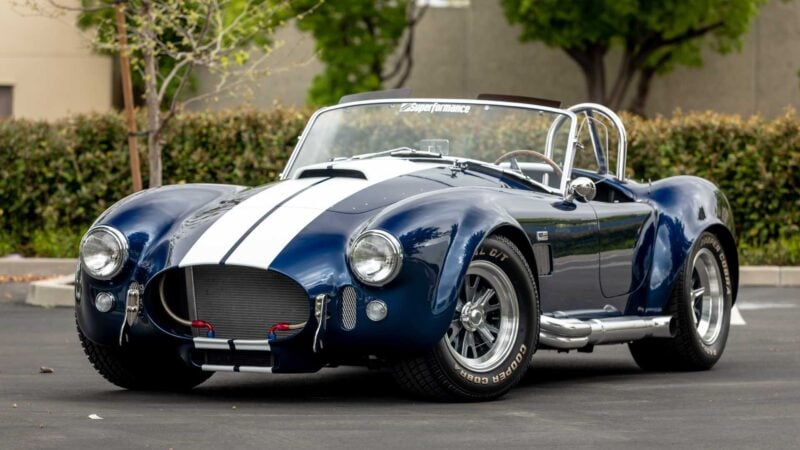
The Shelby Cobra 427 stands as one of the most iconic American sports cars ever created. Introduced in 1965, this legendary vehicle combined British chassis engineering with raw American muscle, creating a performance monster that still captivates enthusiasts today.
The 427 variant featured Ford’s mighty 427 cubic inch (7.0L) V8 engine, producing an astonishing 425 horsepower in its standard form. Its power-to-weight ratio was virtually unmatched at the time, enabling 0-60 mph acceleration in just over 4 seconds.
Carroll Shelby’s vision produced a car that was as beautiful as it was powerful. The wide fenders, aggressive stance, and minimalist cockpit created a distinctive silhouette that remains instantly recognizable decades later.
Despite a relatively short production run, the Cobra 427’s influence on automotive design and performance benchmarks has been immense. Original examples command millions at auction, cementing its status as a true American automotive treasure.
7. Tesla Roadster
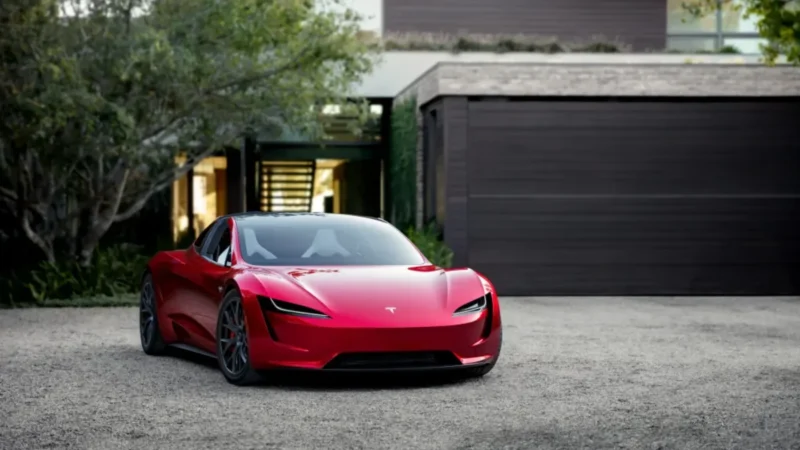
The Tesla Roadster marked a pivotal moment in American automotive history when it launched in 2008 as the first highway-legal all-electric production car. Based on the Lotus Elise chassis, this groundbreaking sports car delivered impressive performance that challenged long-held perceptions about electric vehicles.
With acceleration from 0-60 mph in just 3.7 seconds and a range of approximately 245 miles per charge, the original Roadster demonstrated that electric cars could be both practical and exhilarating. Its lithium-ion battery technology was revolutionary for its time.
Production ended in 2012 after approximately 2,450 vehicles were sold worldwide. The Roadster’s legacy extends beyond its sales figures, as it established Tesla as a serious automaker and helped spark the current electric vehicle revolution.
Tesla announced plans for a next-generation Roadster with even more impressive claimed performance figures, including a 0-60 mph time under 2 seconds.
8. Pontiac Firebird Trans Am
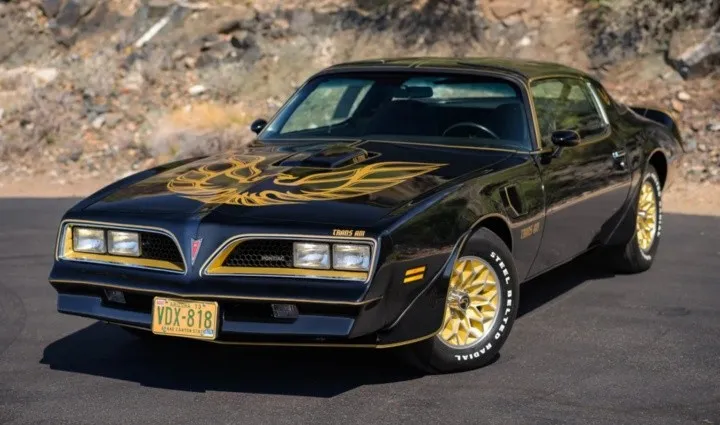
The Pontiac Firebird Trans Am stands as one of America’s most iconic muscle cars, making its debut in 1969 as a high-performance version of the standard Firebird. Its popularity soared after appearing in the 1977 film “Smokey and the Bandit,” where Burt Reynolds famously drove a black and gold Special Edition Trans Am.
The second-generation Trans Am (1970-1981) is particularly celebrated for its distinctive design elements, including the prominent hood bird decal and shaker hood scoop. This model combined aggressive styling with impressive performance capabilities for its era.
Throughout the 1970s, the Trans Am maintained respectable power outputs despite increasing emissions regulations that hampered many competitors. The 1973-1974 Super Duty 455 models are especially prized by collectors for their rare combination of power and handling.
The Trans Am remained in production until 2002, ending its run with the powerful WS6 package that delivered 325 horsepower from its LS1 V8 engine.
9. Dodge Charger Hellcat
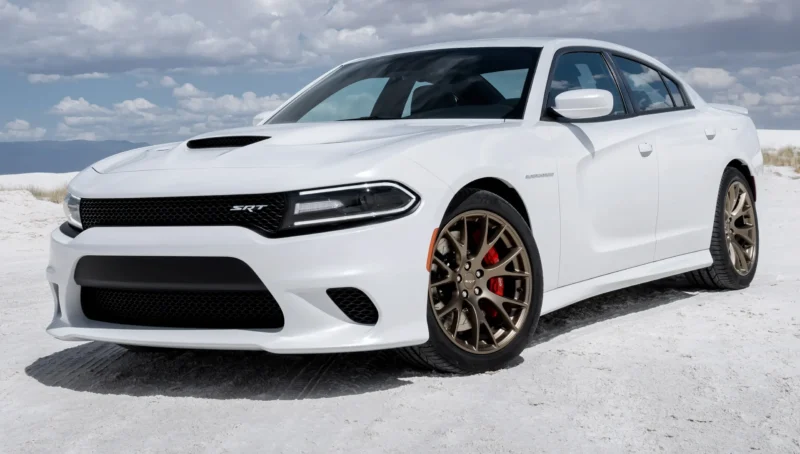
The Dodge Charger Hellcat represents American muscle in its most potent form. Introduced in 2015, this four-door sedan combines family practicality with supercar-level performance.
Under the hood, the Hellcat packs a supercharged 6.2-liter HEMI V8 engine producing 707 horsepower in its original form. Later versions, including the Redeye variant, pushed output to an astounding 797 horsepower.
With a top speed of 204 mph, the Charger Hellcat held the title of the world’s fastest production sedan upon its release. This remarkable vehicle can sprint from 0-60 mph in just 3.6 seconds despite weighing over 4,500 pounds.
The Charger Hellcat maintains the iconic silhouette of its predecessors while incorporating modern technology. Its aggressive stance, functional hood scoop, and distinctive exhaust note make it instantly recognizable on American roads.
10. Chevrolet Corvette Stingray
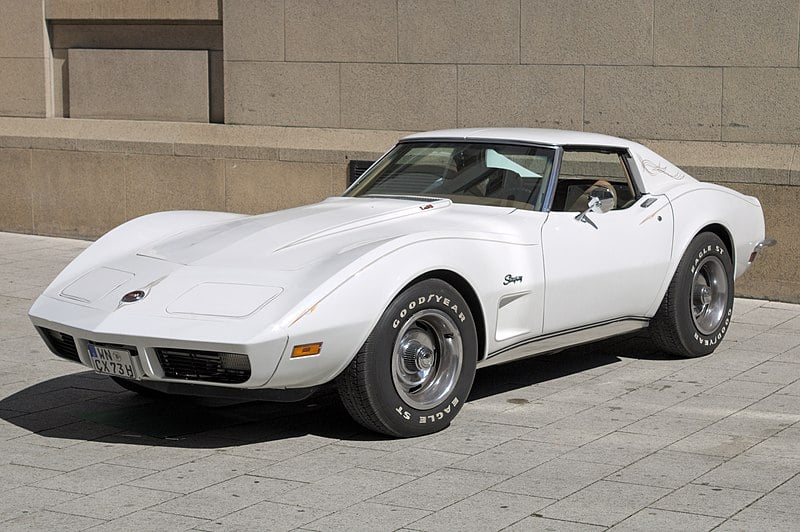
The Chevrolet Corvette Stingray stands as an American automotive icon since its debut in the early 1960s. With its distinctive split rear window on the 1963 model and flowing body lines, the original Stingray captured the imagination of sports car enthusiasts across the nation.
Throughout its evolution, the Stingray has maintained its position as America’s premier sports car. The combination of powerful V8 engines, responsive handling, and competitive pricing has helped the Corvette compete with European sports cars costing significantly more.
The Stingray name returned with the C7 generation in 2014, bringing modern technology while honoring the car’s heritage. The latest C8 model moved to a mid-engine layout, representing the most radical change in the car’s history.
Corvette Stingrays continue to deliver exceptional performance while remaining accessible to everyday enthusiasts, cementing their place in American automotive history.
11. Saleen S7

The Saleen S7 marks one of America’s most impressive entries into the supercar arena. Produced from 2000 to 2009, this mid-engine marvel represented the vision of racing driver Steve Saleen.
With its hand-built 7.0-liter V8 engine, the S7 initially produced 550 horsepower. Later Twin Turbo models cranked out an astonishing 750 horsepower, enabling 0-60 mph acceleration in just 2.8 seconds.
The car’s stunning carbon fiber body wasn’t just for looks. Every curve served aerodynamic purposes, generating significant downforce to keep this beast planted at speeds exceeding 200 mph.
Inside, the S7 featured a unique asymmetrical center console and custom-fitted seats molded specifically for each owner. The car appeared in several Hollywood productions, including “Bruce Almighty” and “Iron Man.”
Despite limited production numbers, with fewer than 100 units built, the S7 established itself as a genuine American competitor to European exotics.
12. Hennessey Venom GT
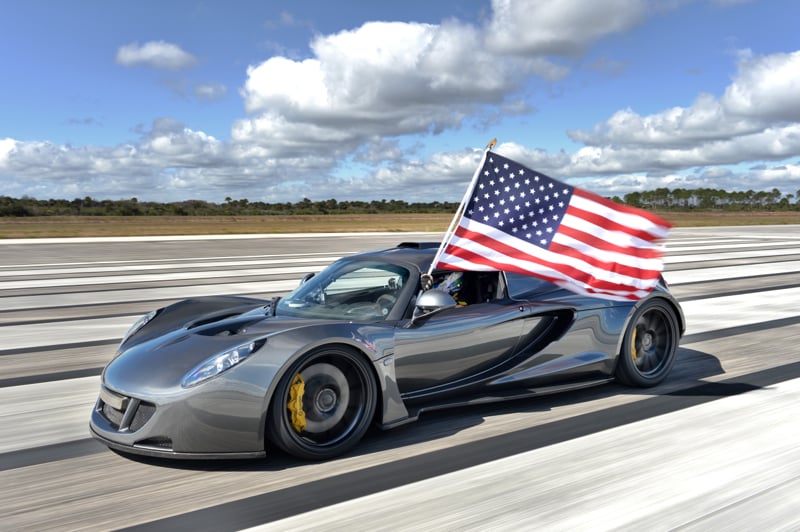
The Hennessey Venom GT represents American engineering at its most extreme. Based on a modified Lotus Exige chassis, this Texas-built hypercar captured worldwide attention when it set a speed record of 270.49 mph in 2014.
Power comes from a twin-turbocharged 7.0-liter V8 producing 1,244 horsepower, allowing the Venom GT to accelerate from 0-60 mph in just 2.7 seconds. Its power-to-weight ratio helped it earn the Guinness World Record for fastest production car from 0-300 km/h.
Production was extremely limited, with only a handful of Venom GTs manufactured. Each vehicle was hand-built in Texas by Hennessey Performance Engineering.
The Venom GT demonstrates America’s ability to compete with established European supercar manufacturers. Its combination of raw power, lightweight construction, and record-setting performance rightfully earns it a place among America’s greatest sports cars.
13. Chevrolet Chevelle SS

The Chevrolet Chevelle SS stands as one of America’s most iconic muscle cars, introduced in 1964 and reaching peak performance during the late 1960s and early 1970s. Its aggressive styling and powerful engine options made it a favorite among enthusiasts looking for both street credibility and drag strip dominance.
The 1970 Chevelle SS 454 remains particularly legendary, offering the LS6 454 cubic-inch V8 that produced an impressive 450 horsepower. This combination of power and torque made it one of the quickest production cars of its era.
Chevelle SS models featured distinctive styling elements including dual racing stripes, hood scoops, and special badging that set them apart from standard Chevelle models. The spacious interior and practical dimensions made it more versatile than many competitors.
Production ended in 1973 as emissions regulations and fuel economy concerns changed the automotive landscape. Today, these vehicles command high prices at auctions due to their historical significance and performance legacy.
14. Ford Mustang Boss 302
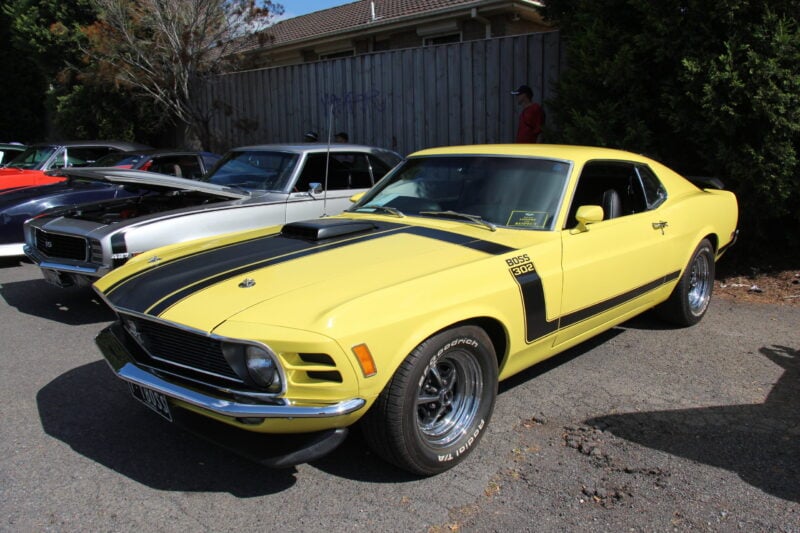
The Ford Mustang Boss 302 emerged as a legendary American sports car in 1969, designed specifically to compete in the SCCA Trans-Am racing series. This high-performance variant featured a modified 302 cubic-inch V8 engine that produced 290 horsepower, though actual output was believed to be higher.
Its distinctive appearance included hood blackout treatment, side stripes, and an optional rear deck spoiler. The Boss 302 also received significant mechanical upgrades like a four-speed manual transmission, power front disc brakes, and a competition-tuned suspension.
After a two-year production run ending in 1970, Ford revived the Boss 302 nameplate in 2012 as a limited-edition model. The modern version delivered 444 horsepower and featured track-focused components, carrying on its predecessor’s performance legacy.
The Boss 302 remains highly collectible and represents one of the purest expressions of American muscle car engineering from its era.
15. Dodge Challenger SRT Demon

The Dodge Challenger SRT Demon stands as one of the most outrageous American muscle cars ever produced. Introduced in 2018, this street-legal drag racer generated tremendous excitement with its astonishing performance capabilities.
The Demon boasts an 840-horsepower supercharged 6.2-liter HEMI V8 engine, making it the most powerful production V8 ever at the time of its release. It can accelerate from 0-60 mph in a mere 2.3 seconds, earning it recognition from the Guinness World Records for the first production car to perform a wheelie.
Dodge limited production to just 3,300 units, with 3,000 allocated to the United States market. The vehicle comes standard with only a driver’s seat to reduce weight, though passengers seats could be added for $1 each.
The Demon includes specialized features like TransBrake, Torque Reserve, and a factory-installed drag radial tire package to maximize its drag strip potential.
16. Buick GNX
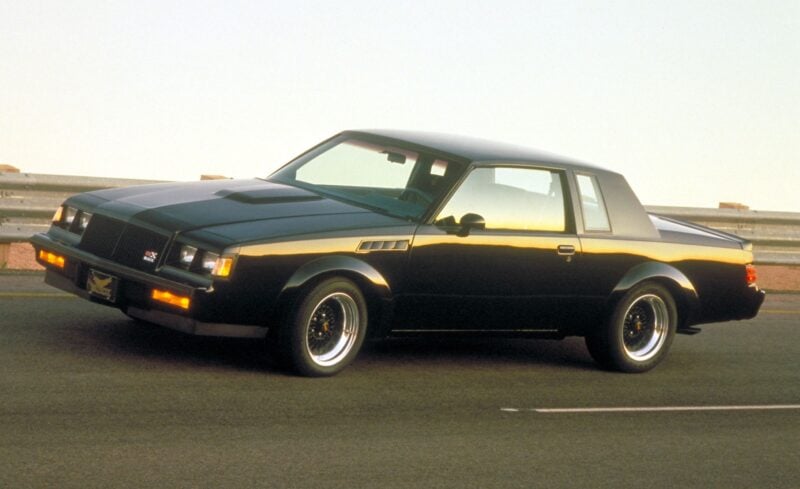
The Buick GNX emerged in 1987 as the ultimate evolution of the Grand National. Limited to just 547 units, this muscle car quickly earned its nickname “Grand National to the Extreme” and became one of the most collectible American sports cars.
Under its menacing black exterior, the GNX packed a turbocharged 3.8-liter V6 engine officially rated at 276 horsepower, though many experts believe it produced closer to 300. The car could rocket from 0-60 mph in just 4.6 seconds, making it faster than contemporary Ferraris and Lamborghinis.
Buick partnered with McLaren Performance Technologies to modify the engine and suspension, transforming the already potent Grand National into something truly special. The GNX featured distinctive fender flares, mesh wheels, and functional vents that enhanced its aggressive appearance.
Today, well-preserved GNX models regularly command prices exceeding $200,000 at auctions, cementing its status as one of the most significant American performance cars of the 1980s.
17. Chevrolet Corvette C8

The Chevrolet Corvette C8 marks a revolutionary change in America’s iconic sports car lineage. Debuting for the 2020 model year, it represents the first mid-engine configuration in Corvette history.
With the engine placed behind the driver instead of under the hood, the C8 delivers superior weight distribution and handling characteristics. This dramatic shift in architecture allows the Corvette to compete directly with exotic European supercars at a fraction of their price.
The base model Stingray boasts a naturally aspirated 6.2-liter V8 producing 495 horsepower when equipped with the Z51 performance package. It achieves 0-60 mph in just 2.9 seconds, making it the quickest base Corvette ever.
The interior received a significant upgrade from previous generations, featuring a driver-focused cockpit with high-quality materials. Its distinctive angular exterior styling maintains Corvette DNA while embracing a more global supercar aesthetic.
18. Ford Falcon XB Interceptor
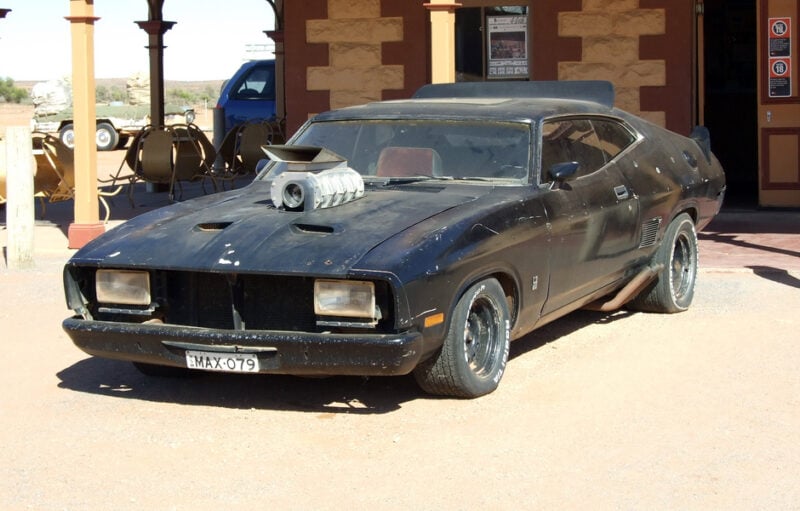
The Ford Falcon XB Interceptor gained worldwide fame through its appearance in the Mad Max film series, where it was portrayed as a high-performance police vehicle. Built in Australia between 1973 and 1976, the XB Falcon GT was the pinnacle of Ford’s Australian muscle car lineup during that era.
Under the hood, the Interceptor typically featured a 351 Cleveland V8 engine producing approximately 300 horsepower. This power, combined with its muscular stance and aggressive styling, made it a formidable performance machine on both street and track.
The XB’s distinctive design elements included the blacked-out hood, prominent hood scoop, and dual headlights that gave it an intimidating presence. While technically an Australian-designed vehicle, its American V8 heart and muscle car ethos have earned it recognition among the greatest American-influenced sports cars.
Ford produced just over 1,200 XB GT hardtops, making surviving examples highly collectible today.
19. Chrysler 300 SRT8

The Chrysler 300 SRT8 represents American muscle in a full-size luxury sedan package. Introduced in 2005, this high-performance variant brought serious power to Chrysler’s flagship sedan, challenging perceptions of what an American luxury car could be.
Under the hood, the second-generation 300 SRT8 packed a 6.4-liter HEMI V8 producing 470 horsepower and 470 lb-ft of torque. This powertrain enabled the substantial sedan to accelerate from 0-60 mph in just 4.3 seconds despite its hefty weight.
The 300 SRT8 combined brute force with surprising handling capabilities thanks to its adaptive damping suspension and Brembo brakes. Its aggressive styling, featuring a distinctive front fascia, hood scoop, and rear spoiler, clearly signaled its performance intentions.
Inside, the SRT8 offered a blend of luxury and sportiness with performance seats, special trim, and SRT-specific gauges that monitored performance metrics.
20. Panoz Esperante

The Panoz Esperante represents a unique chapter in American sports car history. Introduced in 2000 by Panoz Auto Development, this hand-built vehicle showcased exceptional craftsmanship with its aluminum chassis and body panels.
Under the hood, the Esperante featured a Ford-sourced 4.6-liter V8 engine producing 305 horsepower. Later GTLM versions boosted output to an impressive 420 horsepower, giving the car serious performance credentials.
The Esperante distinguished itself with a blend of modern engineering and classic sports car design elements. Its limited production numbers ensured exclusivity, with each vehicle requiring approximately 3,000 hours of hand labor to complete.
On the racetrack, modified Esperante variants achieved significant success in GT racing, including class victories at Le Mans. This combination of street performance and racing pedigree cemented the Esperante’s place among notable American sports cars.
21. Shelby Series 1

The Shelby Series 1 represents a significant milestone as the only car completely designed and engineered by Carroll Shelby from the ground up. Unveiled in 1998, this limited-production roadster showcased American ingenuity with its lightweight aluminum chassis and carbon fiber body.
Powered by a modified Oldsmobile Aurora 4.0-liter V8 engine, the Series 1 produced 320 horsepower and could accelerate from 0-60 mph in just 4.4 seconds. Its top speed approached 170 mph, impressive performance metrics for its era.
Production challenges and regulatory issues limited the Series 1 to just 249 examples, making it one of the rarer American sports cars. The vehicle featured a unique combination of modern technology and classic roadster styling cues.
Despite its short production run, the Shelby Series 1 demonstrated that American manufacturers could produce sophisticated, high-performance sports cars capable of competing with European counterparts.
22. Pontiac GTO Judge

The Pontiac GTO Judge, introduced in 1969, stands as one of America’s most iconic muscle cars. Named after a popular comedy routine, this high-performance variant of the already legendary GTO raised the bar with distinctive styling and impressive power.
The Judge featured a standard Ram Air III 400 cubic-inch V8 engine producing 366 horsepower, with an optional Ram Air IV pushing output even higher. Its eye-catching appearance included bold “Judge” decals, a rear spoiler, and exclusive color options like Carousel Red.
Pontiac built the Judge during the pinnacle of the muscle car era, from 1969 to 1971. Its combination of aggressive styling, strong performance, and limited production numbers have made it highly collectible today.
The GTO Judge represented American automotive muscle at its finest, offering the perfect blend of street presence and quarter-mile capability that defines the greatest American sports cars.
23. Ford Mustang Bullitt

The Ford Mustang Bullitt is a special edition model that pays homage to the iconic 1968 Mustang GT fastback driven by Steve McQueen in the classic film “Bullitt.” First introduced in 2001, the Bullitt edition has appeared in several generations of the Mustang lineup.
The Bullitt is instantly recognizable by its Dark Highland Green paint (though black was also offered), minimal exterior badging, and unique wheels designed to resemble those on the movie car. Inside, the vehicle features special touches like a white cue ball shift knob and Bullitt-specific gauges.
Performance upgrades typically include increased horsepower over standard GT models, upgraded suspension components, and a distinctive exhaust note. The 2019-2020 Bullitt edition, part of the sixth-generation Mustang, produced 480 horsepower from its 5.0-liter V8.
The Mustang Bullitt combines Hollywood heritage with genuine performance credentials, making it one of America’s most culturally significant sports cars.
24. Vector W8

The Vector W8 stands as one of America’s most exclusive supercars, produced from 1989 to 1993 by Vector Aeromotive Corporation. Only 17 examples were ever completed, making it exceptionally rare among American sports cars.
Powered by a twin-turbocharged 6.0-liter V8 engine, the W8 produced an impressive 625 horsepower. This tremendous power allowed it to achieve a top speed of 242 mph and accelerate from 0-60 mph in just 3.9 seconds – remarkable figures even by today’s standards.
The W8’s aerospace-inspired design featured a wedge-shaped body with scissor doors and a fighter jet-style cockpit. Its construction utilized advanced materials including carbon fiber and Kevlar composite.
Despite its limited production run, the Vector W8 represented American ambition to compete with established European exotic manufacturers. Its technological innovations and performance capabilities secured its place in American automotive history.
25. Chevrolet Monte Carlo SS

The Chevrolet Monte Carlo SS represents an important chapter in American muscle car history. Introduced in the 1980s, it brought back performance credentials to the Monte Carlo nameplate after the horsepower decline of the 1970s.
With its 305 cubic inch V8 engine, the Monte Carlo SS delivered respectable power for its era. The aerodynamic styling and distinctive nose helped it stand out from more pedestrian versions of the Monte Carlo.
The Monte Carlo SS gained significant racing pedigree through its NASCAR success. Its achievements on the track helped cement its status as a legitimate American sports car despite its full-size proportions.
Production continued until 1988 before the name returned in the 2000s. Collectors particularly value the 1983-1988 models with their classic rear-wheel drive configuration and motorsport heritage.
26. Dodge Daytona
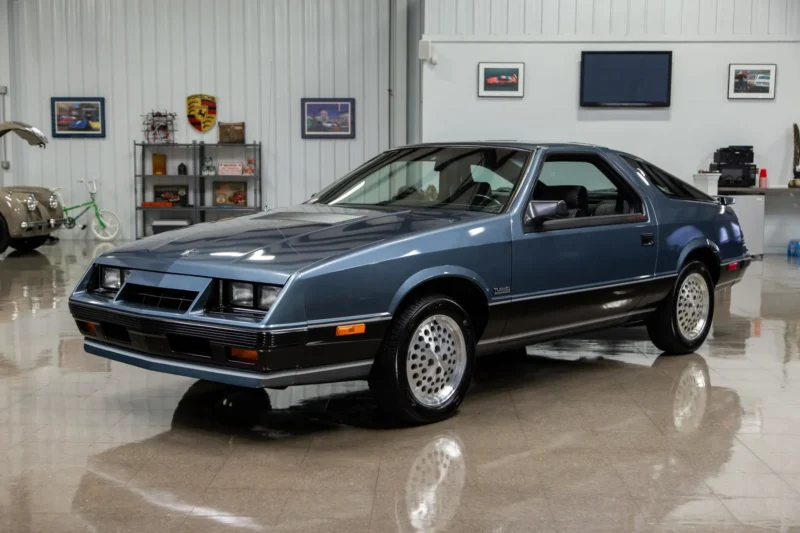
The Dodge Daytona made its debut in 1984 as a front-wheel-drive sports car based on the Chrysler G platform. It served as Dodge’s response to the growing demand for affordable performance vehicles during that era.
With its distinctive pop-up headlights and optional rear spoiler, the Daytona offered both style and aerodynamic functionality. The most sought-after versions included the Turbo Z and IROC R/T models.
The Daytona’s performance peaked with the introduction of the Shelby Z trim, which featured a turbocharged 2.2-liter engine producing up to 174 horsepower. This variant could accelerate from 0-60 mph in under 7 seconds—impressive figures for its time.
Dodge continued production until 1993, with the Daytona receiving several styling updates and powertrain improvements throughout its lifespan. Though not as celebrated as some American muscle cars, the Daytona represented an important chapter in American sports car evolution during the 1980s and early 1990s.
27. Mercury Cougar XR-7

The Mercury Cougar XR-7 earned its place among America’s great sports cars when it debuted in 1967 as Mercury’s response to the Ford Mustang. With its longer wheelbase and more luxurious appointments, the Cougar XR-7 offered a unique blend of performance and sophistication.
Under the hood, the Cougar XR-7 packed serious muscle with engine options including the 390 cubic inch V8 and eventually the potent 428 Cobra Jet. These powerplants gave the elegant cat genuine performance credentials to match its refined styling.
The Cougar’s distinctive design featured hideaway headlights, a vertical bar grille, and sequential turn signals. Its European-inspired interior with wood-grain trim and toggle switches set it apart from competitors.
While often overshadowed by its Mustang cousin, the Cougar XR-7 successfully carved out its own identity as an upscale performance vehicle that balanced sportiness with comfort.
28. Oldsmobile 442
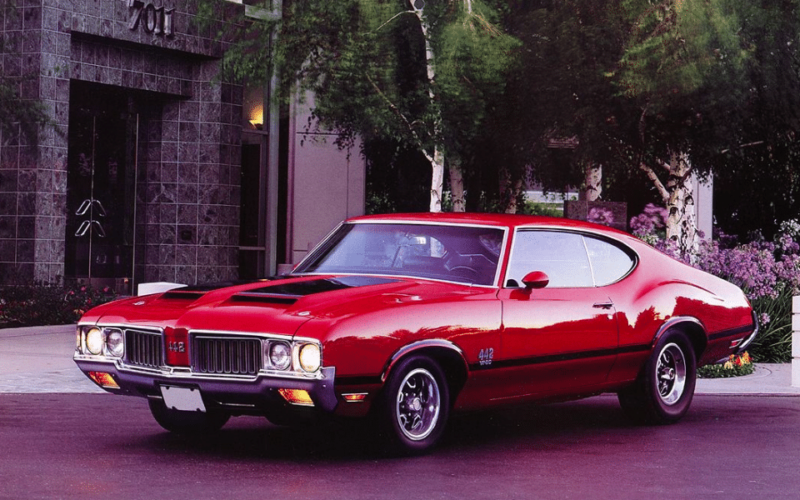
The Oldsmobile 442 stands as one of America’s definitive muscle cars. First introduced in 1964, the name originated from its four-barrel carburetor, four-speed manual transmission, and dual exhausts.
By 1970, the 442 reached its performance peak with the W-30 package offering a 455 cubic inch V8 engine producing 370 horsepower and 500 lb-ft of torque. This combination delivered impressive quarter-mile times under 14 seconds.
The 442 featured distinctive styling with bold body lines, hood scoops, and racing stripes that set it apart from typical Oldsmobile models. Its balanced handling characteristics made it more than just a straight-line performer.
While production ended with the Oldsmobile brand’s discontinuation, the 442 remains highly sought after by collectors. Its combination of power, style, and relative refinement secured its place in American automotive history.
29. Hennessey Exorcist
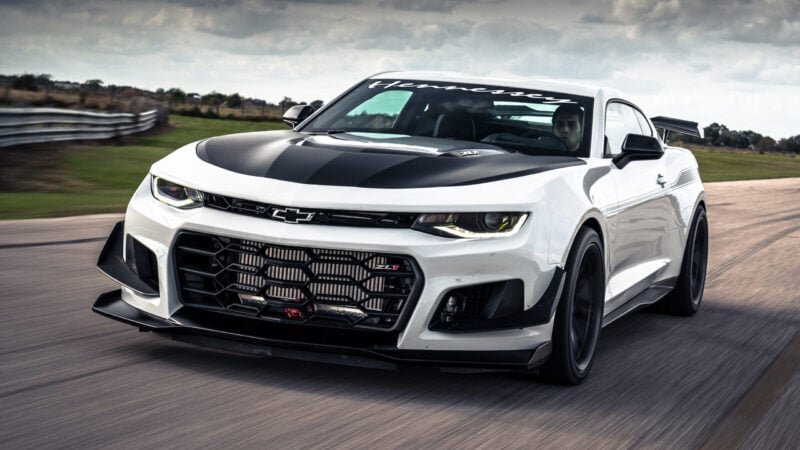
The Hennessey Exorcist represents American muscle car engineering taken to extreme levels. Based on the Chevrolet Camaro ZL1, Hennessey Performance transformed it into a 1,000-horsepower monster capable of reaching 60 mph in just 2.1 seconds.
Introduced in 2017, the Exorcist was specifically designed to outperform the Dodge Demon, hence its devilish name. The Texas-based tuning company upgraded the supercharger, camshaft, and exhaust system of the standard ZL1 to achieve these remarkable performance figures.
With a top speed of 217 mph, the Exorcist quickly established itself as one of the fastest production cars built in America. Hennessey limited production to just 100 units, making this high-performance Camaro a rare collector’s item.
The Exorcist delivered supercar performance in a practical package that maintained daily drivability despite its track-focused capabilities. It represents the pinnacle of modern American muscle car engineering.
30. Chevrolet Corvette Grand Sport

The Chevrolet Corvette Grand Sport holds a special place in American automotive history. First introduced in 1963, the original Grand Sport was created by Zora Arkus-Duntov as a lightweight racing variant of the C2 Corvette.
Only five examples of the original Grand Sport were built before GM’s racing ban halted production. These rare vehicles featured lightweight construction, with fiberglass bodywork and aluminum components that reduced weight significantly.
The Grand Sport name returned in 1996 as a special C4 Corvette edition, and again in 2010 for the C6 generation. Each revival maintained the performance-focused spirit of the original.
The modern Grand Sport models blend the standard Corvette’s drivetrain with the Z06’s wider body and enhanced suspension components. This combination creates a balanced sports car that excels both on the street and track.
Historical Impact of American Sports Cars
American sports cars have profoundly shaped automotive history through technical innovation and cultural influence. These vehicles represent more than just transportation—they embody American values of freedom, power, and individualism that resonated worldwide.
Evolution Over the Decades
The 1950s marked the birth of the American sports car as we know it, with the Chevrolet Corvette’s 1953 debut establishing a new category of performance vehicles. Initially equipped with a modest inline-six engine, the Corvette quickly evolved to house more powerful V8 engines.
The 1960s brought the legendary muscle car era, with the Ford Mustang creating an entirely new market segment—the pony car. This period saw horsepower ratings soar as manufacturers competed in what became known as the “horsepower wars.”
During the 1970s, emissions regulations and fuel crises forced adaptations, leading to performance compromises but also engineering innovations. American sports cars became more efficient while maintaining their distinctive character.
The 1980s and 1990s witnessed a technological renaissance with fuel injection, computer controls, and improved aerodynamics. Cars like the Dodge Viper demonstrated America could produce world-class supercars.
Modern American sports cars blend heritage styling with cutting-edge technology, evidenced by vehicles like the Ford GT and the C8 Corvette with its mid-engine design.
Influence on Global Automotive Design
American sports cars have consistently exported design philosophies that influenced manufacturers worldwide. The long-hood, short-deck proportions pioneered by American designers became a universal sports car aesthetic.
European manufacturers often adopted American approaches to accessibility and value. The concept of “performance for the masses”—delivering high power at reasonable prices—spread globally after American companies demonstrated its market viability.
Key Global Influences:
- V8 engine popularization
- Accessible performance philosophy
- Bold, unapologetic styling elements
- Emphasis on straight-line speed
Japanese sports cars of the 1990s, while technically different, borrowed the American ethos of democratizing performance. Even today, premium European brands incorporate elements of American sports car philosophy in their more affordable performance models.
The cultural impact extends beyond design. American car culture, centered around these powerful vehicles, has been exported worldwide through films, music, and media, creating enthusiast communities on every continent.
Defining Features of Iconic Models
American sports cars have established their legendary status through distinctive characteristics that set them apart from other vehicles globally. These models combine raw power with innovative engineering and unmistakable styling.
Performance Innovations
The Shelby GT500’s supercharged V8 revolutionized muscle car performance in the 1960s, delivering unprecedented horsepower that changed performance expectations forever. This innovation continued with the Chevrolet Corvette ZR1’s introduction of supercharging to mainstream American sports cars in the 2000s.
The Ford GT showcased mid-engine architecture and advanced aerodynamics, bringing European racing technology to American production cars. Its carbon fiber construction represented a significant departure from traditional steel-bodied American sports cars.
Key Performance Breakthroughs:
- Introduction of overhead valve V8 engines in the 1950s Corvettes
- Dodge Viper’s massive naturally-aspirated V10
- Tesla Roadster’s proof that electric sports cars could deliver exhilarating performance
- Cadillac CTS-V’s magnetic ride control suspension system
Design and Aesthetic Trends
The Corvette Stingray’s split-window design from 1963 remains one of the most recognizable styling elements in automotive history. Its flowing lines and hidden headlights created a template that influenced sports car design for decades.
American muscle cars established their visual identity through bold proportions with long hoods, short decks, and aggressive stances. The Plymouth Hemi ‘Cuda exemplified this approach with its shaker hood scoop and vibrant color options like “Plum Crazy” purple.
Modern American sports cars blend heritage design cues with contemporary elements. The fifth-generation Camaro successfully reinterpreted its 1969 predecessor while incorporating modern aerodynamics and technology.
The Dodge Challenger Hellcat maintains classic muscle car proportions while adding modern touches like LED halo headlights and functional hood scoops for cooling its supercharged engine.

D Conroy
Meet our senior writer and content manager of Automasterx. He has worked in several mechanical garages and mastered different vehicle diagnoses and parts repair. He never stops until finding out the ultimate solutions for any vehicle fault code. However, ensuring the only solid solutions for each vehicle malfunction is his core part of the duty, alongside analyzing fault codes and signals.

